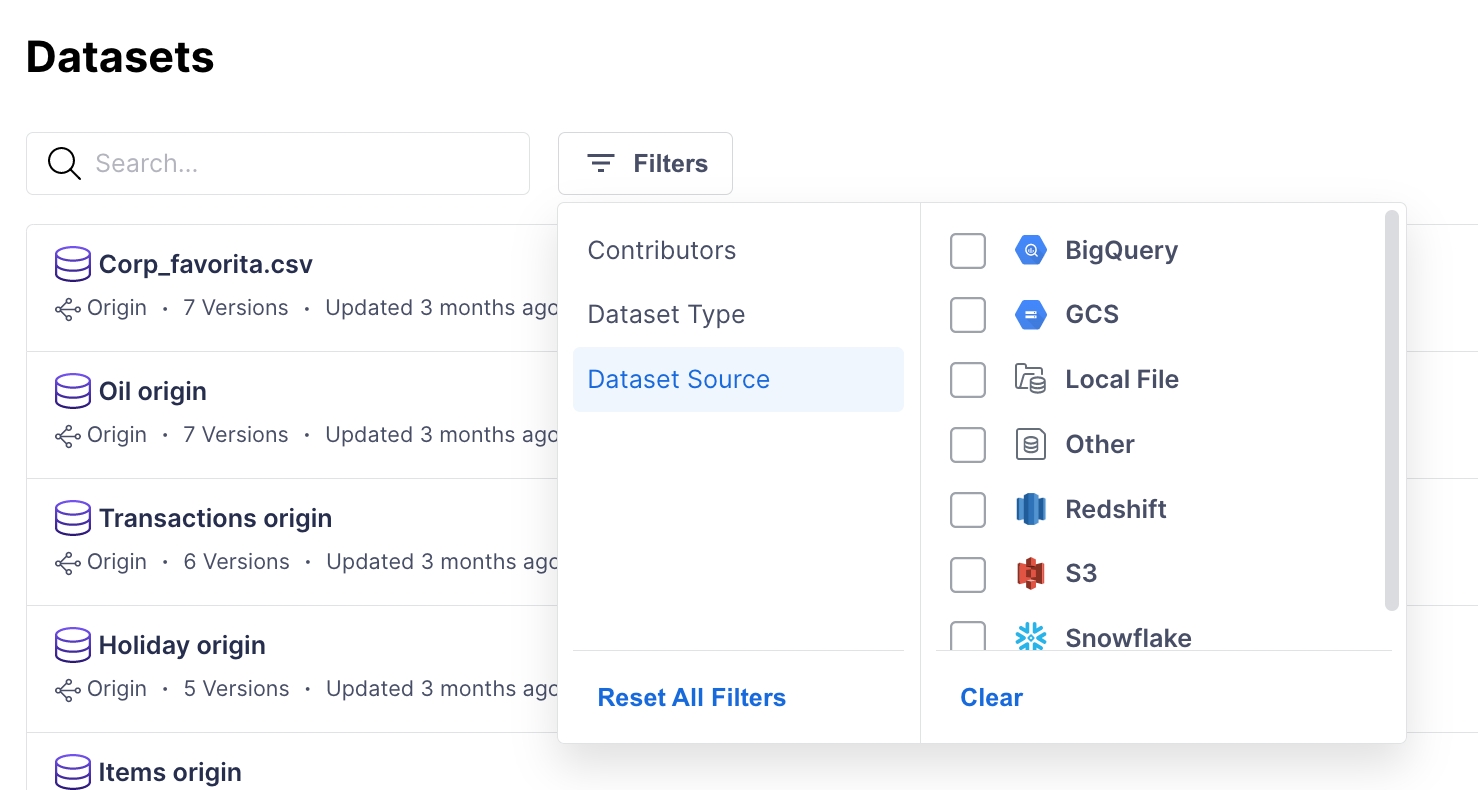Log a custom data source
Learn how to wrap datasets from a custom data source.
To wrap data from any data source, create a custom resource class and inherit from the Vectice baseResource class. Then create a _build_metadata() and _fetch_data() method to collect metadata from your custom data sources.
Custom resource example code
Below is a pre-built custom resource code example you could use to build your own data resource:
from vectice import Resource, DatasetSourceOrigin, FilesMetadata
class MyCustomResource(Resource):
_source_name = "Data source name"
def __init__(
self,
paths: str | list[str],
):
super().__init__(paths=paths)
def _build_metadata(self) -> FilesMetadata: #
files = ... # fetch file list from your custom storage, retrieve them from self._paths
total_size = ... # compute total file size
return FilesMetadata(
size=total_size,
origin=self._source_name,
files=files,
usage=self.usage,
)
def _fetch_data(self) -> dict[str, bytes]:
files_data = {}
for file in self.metadata.files:
file_contents = ... # fetch file contents from your custom storage
files_data[file.name] = file_contents
return files_dataFrom this point, you can use your custom resource class to wrap data from any data source (i.e., Redshift, RDS, Snowflake, etc).
To learn how to log your dataset from your custom data source, view our How to log datasets guide.
